by Lisa Cooke | Jun 18, 2013 | 01 What's New, FamilySearch, Irish, Records & databases
 If you’ve got Irish roots and haven’t started exploring them, check out Irish Genealogy, recently re-launched by Ireland’s Department of Arts, Heritage and the Gaeltacht. Beginners rejoice: you can read the site in English and there are helpful links on the lower left to introduce you to Irish research and records and to explain how the site works. You can search indexes to church records, the 1901 and 1911 census, tithe records, soldiers’ wills, the Ireland-Australia database and more.
If you’ve got Irish roots and haven’t started exploring them, check out Irish Genealogy, recently re-launched by Ireland’s Department of Arts, Heritage and the Gaeltacht. Beginners rejoice: you can read the site in English and there are helpful links on the lower left to introduce you to Irish research and records and to explain how the site works. You can search indexes to church records, the 1901 and 1911 census, tithe records, soldiers’ wills, the Ireland-Australia database and more.
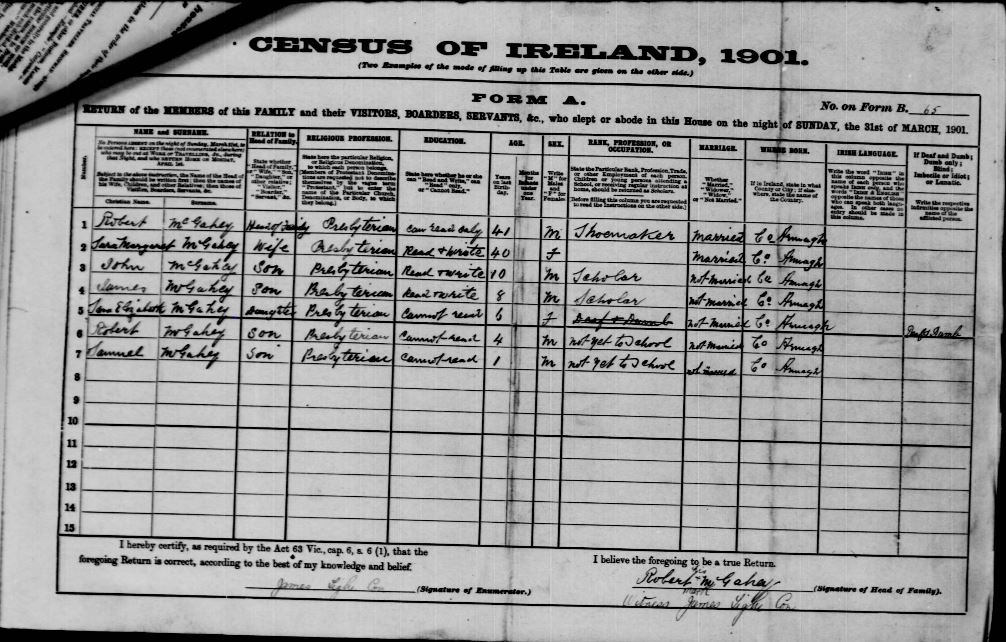
Irish census, 1901, sample image from Irish Ancestors website.
According to Dick Eastman, the Irish government plans to put its own indexes to birth, death and marriage records (back to 1845) on the Irish Genealogy website. FamilySearch currently has an index to 23 million Irish Civil Registrations (1845-1958), which includes births, marriages and deaths, but excludes records for what became Northern Ireland after 1922. (They’ve also got lots of Irish court, tithe and prison records, too.)
It isn’t always easy to find your Irish ancestors–you may need to call on that proverbial Irish luck–but websites like these may very well be your own ancestral pot ‘o gold.
by Lisa Cooke | Sep 26, 2013 | 01 What's New, Findmypast, Irish, Newspaper
Got Irish roots? You may want to check out Findmypast.com’s new Irish Newspaper Collection, with nearly 2 million searchable historical Irish news

Glenarm Co Ireland
articles.
“Digitized from the collections of the British Library, the Irish Newspapers Collection on findmypast.com is a rich resource for genealogists in search of their Irish roots,” states a company press release. “The collection features six newspaper titles (both national and local) covering areas in Leinster, Munster, Connaught and Ulster, namely: The Belfast Morning News, The Belfast Newsletter, The Cork Examiner, The Dublin Evening Mail, The Freeman’s Journal and The Sligo Champion.
Each newspaper title covers different dates in Ireland’s history with articles from the pre-Famine era to post-Irish independence in 1926. For family historians, the newspapers contain valuable entries like advertisements, obituaries and letters to the editor which provide details on what local and national life would have been like in Ireland hundreds of years ago.”
The time period covered by these papers (1820-1926) includes the Great Famine that caused millions of Irish to flee the country for more fertile shores. Findmypast.com subscribers can access this collection as well as those with World subscriptions on all findmypast international sites.

Available at http://genealogygems.com
Still not sure how to use newspapers in genealogy research? My book How to Find Your Family History in Newspapers, available in both print and e-book formats, shows you how to get the most out of online (and offline) newspapers.
I wish you some old-fashioned Irish luck finding your family in newspapers and beyond!
by Lisa Cooke | Mar 10, 2017 | 01 What's New, Irish, Records & databases
We are bringing you Irish historical photographs from Dublin this month in celebration of Irish heritage. Search these amazing photos of your ancestral homeland. Also this week, directories from Scotland, church records of the United Kingdom, and censuses for Canada and New York State.
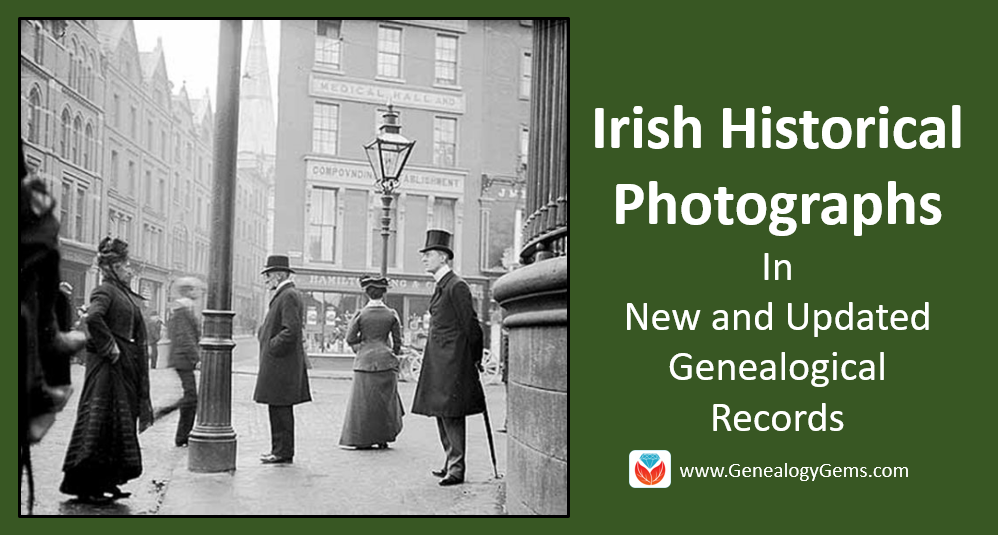
Ireland – Dublin – Irish Historical Photographs
The Dublin [Ireland] City Council has launched an online archive of over 43,000 Irish historical photographs and documents to their website. These amazing photographs can be searched by archive, date, or location for free. They show images of events like the
Eucharistic Congress and the
North Strand Bombing. There are also images of football games, bus strikes, and old Dublin streets.
These Irish historical photographs includes pictures of old documents and objects, too, with the oldest document dated to 1757!
Take a look at the entire archive, here.
More on Beginning Irish Genealogy
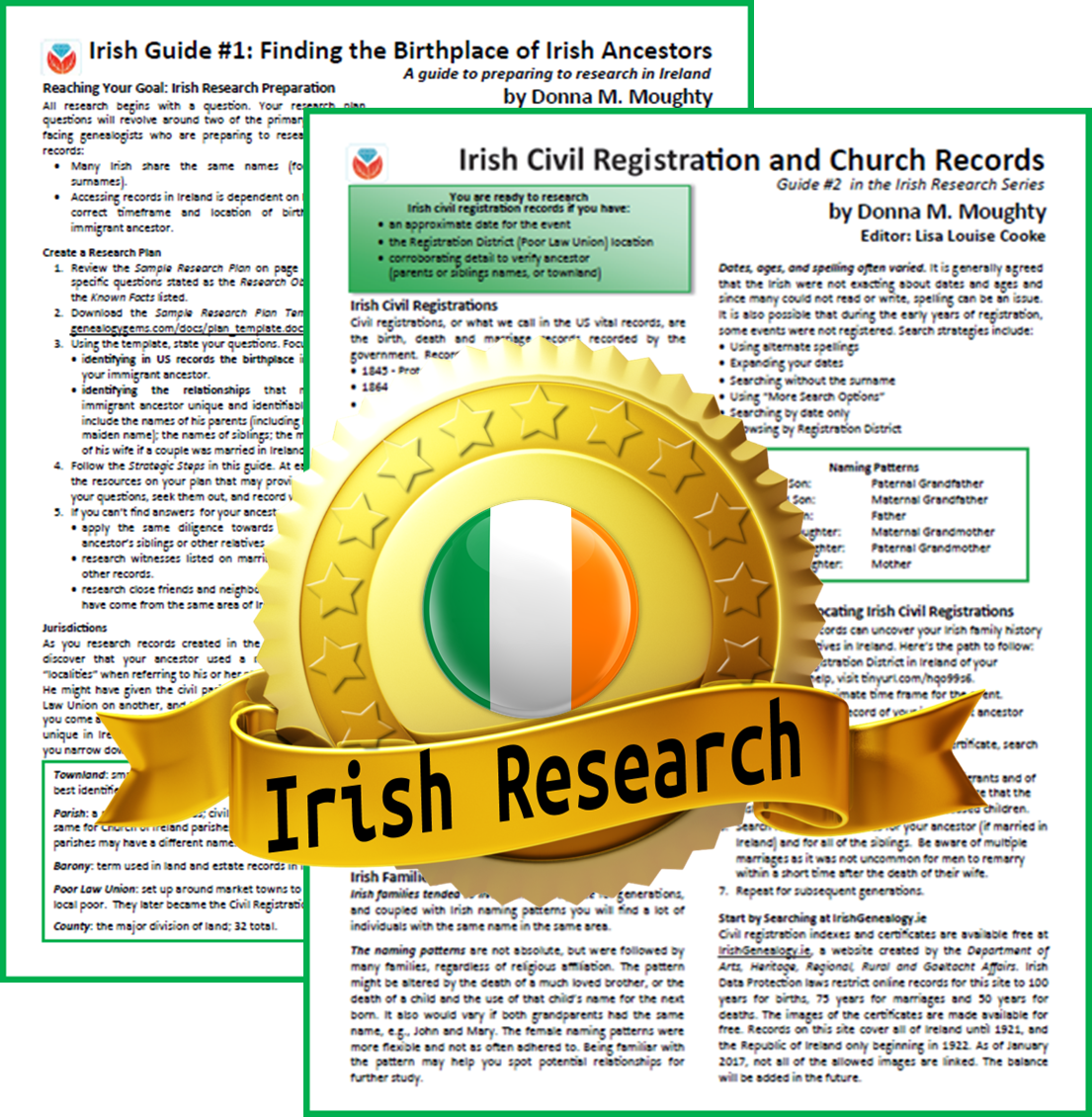 You’ll love these two quick-guides by Donna Moughty on Irish genealogy. Guide #1 titled Preparing for Success in Irish Records Research will help you determine a birth place, differentiate between persons with the same name, and walk you through identifying helpful US records.
You’ll love these two quick-guides by Donna Moughty on Irish genealogy. Guide #1 titled Preparing for Success in Irish Records Research will help you determine a birth place, differentiate between persons with the same name, and walk you through identifying helpful US records.
Guide #2 titled Irish Civil Registration and Church Records, will guide you through locating Protestant church records, civil registrations, and more. It will also walk you step-by-step through using the new online Civil Registration records.
And now, purchase these quick-guides as a bundle
Scotland – Post Office Directories
Scotland Post Office Directories contains over 382,000 records and allows you to explore thousands of pages of directories to learn more about the life and work of your Scottish ancestors. This Findmypast collection focuses on a particular town or district although a number of national postal directories are also included. The majority comprise a description of the place along with lists of people by occupation. For example, you will find lists of magistrates, councilors, sheriffs, police officers, and merchants.
The records are do not contain transcripts, but do include a digital image. The detail you will find on each page will depend on the type and date of the directory.
In conjunction with these post office directories, there are some that are browse-image only. They have not been indexed at this time. These 598 volumes of the Scotland Post Office Directories Image Browse are an excellent source for family history and those who need to trace their ancestors on a yearly basis.
Canada – 1842 Census

The Lower Canada Census 1842 at Findmypast contains over 46,000 records. The Province of Lower Canada was a British colony on the lower Saint Lawrence River and the shores of the Gulf of Saint Lawrence between 1791 and 1841. It covered the southern portion of the modern-day Province of Quebec and the Labrador region of the Province of Newfoundland and Labrador.
Each search result will include an image of the original document and a transcript. The original returns were printed in French and English and transcripts may include occupation, language, residence, and the number of inhabitants at their dwelling. Images can provide detailed information about the local area such as number of inhabited and uninhabited buildings, the number of barley mills, tanneries, distilleries, the price of wheat since last harvest, and the price of agricultural labor per day.
United Kingdom – London – Russian Orthodox Church Records
Findmypast has added records to their collection titled Britain, Russian Orthodox Church in London. Over 13,000 records taken from volumes of birth, marriage, and death records from the Russian Orthodox Church in London in exist is this collection. The records further include correspondences, congregational records, and church documents. The majority of the volumes are written in Russian although a limited number of English-language records are available.
The Russian Orthodox Church records are available as a browse set only at this time. You will need to search the records by the document description such as Births, marriages, deaths, converts, and passports, 1888-1919 or Donations to St Petersburg Guardianship for Poor Clergymen, 1863. Then, search within the digitized volume to find your ancestor.
You will find numerous correspondences with other church leaders in London, America, Russia, and Japan, as well as documents related to religious doctrine. The facts found in each volume will depend on the type of record you are viewing. Birth, marriage, and death records will typically include the individual’s name, event date, and place, while birth and marriage records may also include the names of the individual’s parents.
United Kingdom – War Records
New records have been added to the Findmypast collection of Anglo-Boer War Records 1899-1902. This unique database of more than 470 sources may reveal the unit your ancestor served with and any medals, honors, or awards they won. The register also contains a completely revised casualty list of 59,000 casualty records.
Each record contains a transcript and may include the following information:
- Name
- Service number and rank,
- Unit & regiment
- Medals, honors or awards received
- Memorials relating to death if applicable
United Kingdom – England – Births and Christenings
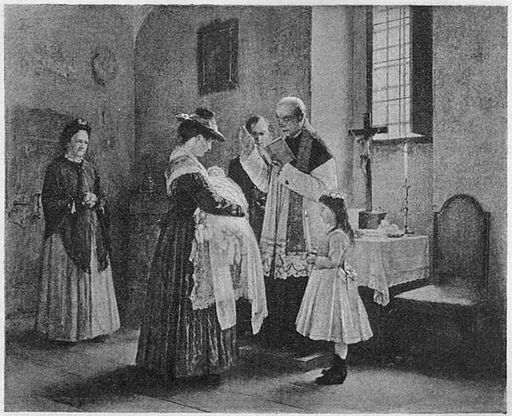
By Anton Laupheimer [Public domain], via Wikimedia Commons
Though this collection from FamilySearch has been available for awhile, they have recently added more records. The
England Births and Christenings, 1538-1975 now totals over 68 million records. There are some important tips and known problems with this database. Before searching, be sure to read the details at the FamilySearch Wiki,
here. As an example: In birth or christening records, if a surname is not listed for the child, the indexer often assigns the father’s surname to the child. This surname may not be correct. So if you are looking for a birth or christening, search by the given name of the child, adding parents’ names and as much locality information as is permitted.
United States – New York – State Census
FamilySearch has added to the New York State Census of 1865 this week. State censuses are particularly helpful to researchers because they fill in the gap between federal censuses. Unfortunately, the following counties are missing:
- Allegany
- Clinton
- Franklin
- Genesee
- Hamilton
- New York
- Putnam
- Queens
- Seneca
- St Lawrence
- Sullivan
- Westchester
- Wyoming
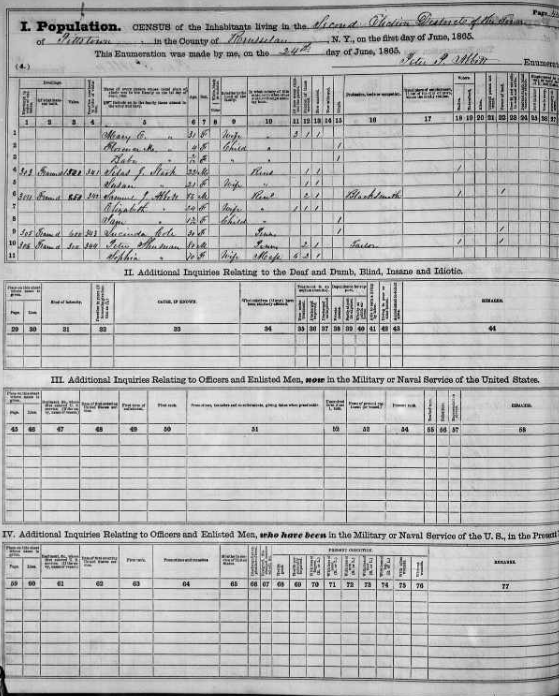 The population schedule includes the name, age, birthplace, and occupation of each household member as most censuses do.
The population schedule includes the name, age, birthplace, and occupation of each household member as most censuses do.
However, this census also includes two military schedules with information of officers and enlisted men currently in the military and men who had served in the military. This census contains information on when and where the individual first entered the military, rank, how long they were in the service, their present health, as well as several other items.
Additionally, the census contains tables on marriages and deaths occurring during the year ending June 1, 1865. These tables contain typical marriage and death information, but can be a helpful resource for those who have been unable to find these records in traditional locations.
Lastly, a second table entitled deaths of officers and enlisted men contains deaths of individuals which had occurred while in the military or naval service of the United States, or from wounds or disease acquired in said service since April, 1861, reported by the families to which the deceased belonged when at home. It includes the name of the deceased, age at death, if married or single, if a citizen, several items relating to military information, date of death, place of death, manner of death, survivors of the deceased, place of burial and any remarks.
by Lisa Cooke | Aug 1, 2019 | 01 What's New, Research Stories |
Lessons in life often translate to lessons in genealogy. Here’s an example of how digging deeper can have you singing a happier research tune.
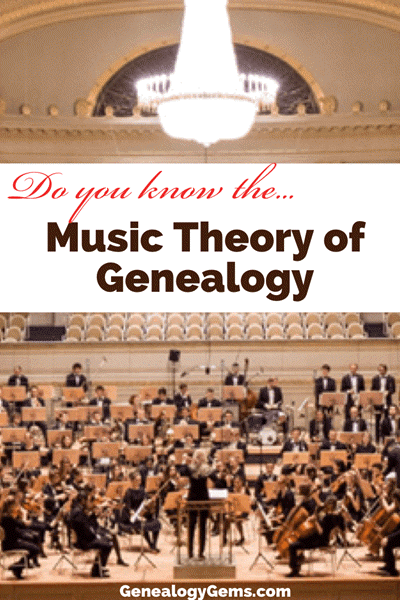
The Music of My Childhood
When I was a kid I had a million interests (and I still do.)
I loved art of all kinds – painting, drawing, and paper mache. I enjoyed baking and particularly candy-making. I had a teal blue easy bake oven I used constantly, and a cotton candy making machine that spun sugar into treats – Yum!
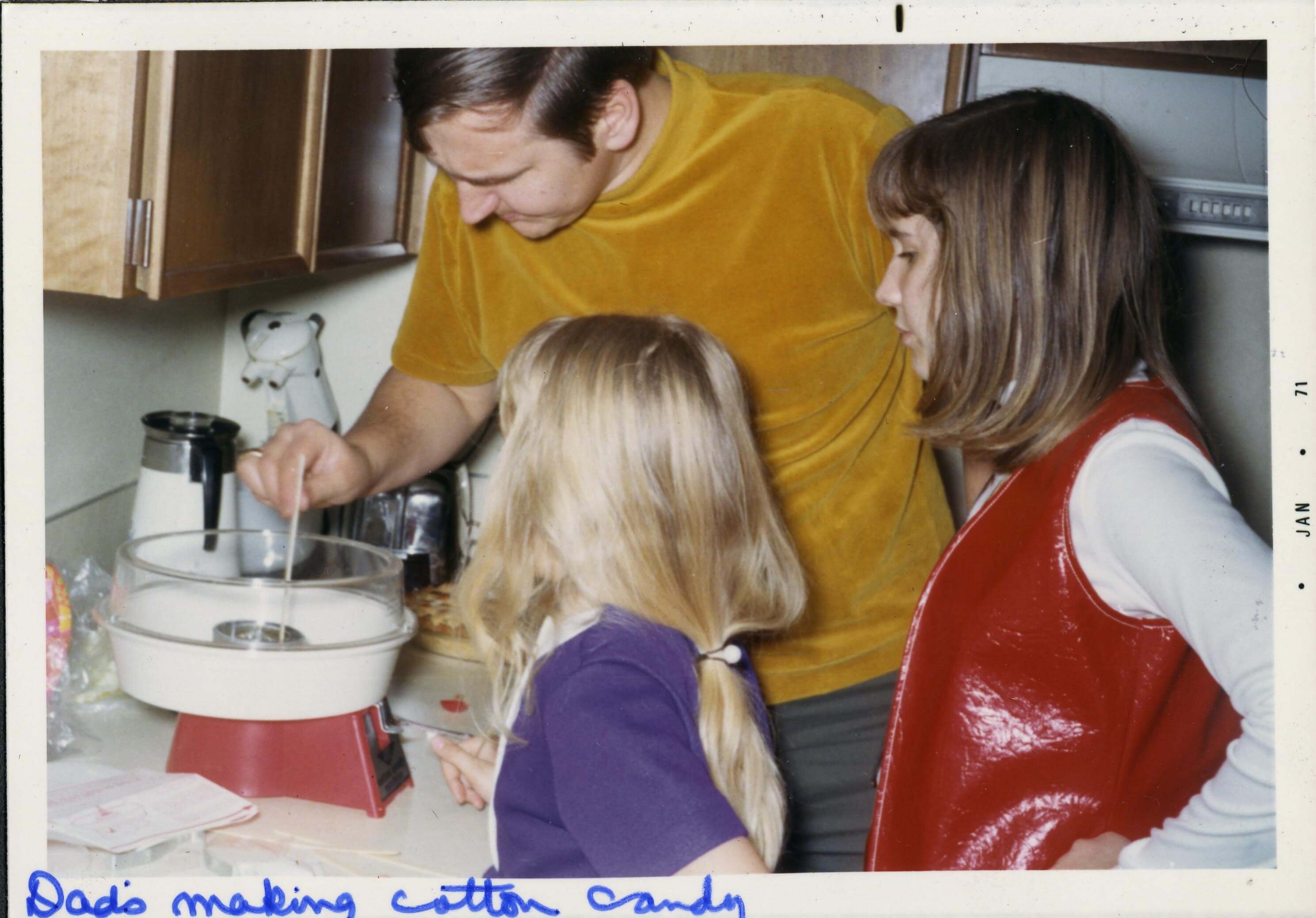
Making cotton candy with my Dad, Christmas 1970.
At the age of eight I learned to water-ski. It came surprisingly easy, so much so that my Dad got me a pair of short trick skis on which I learned to do a full 360 degree turn.
And like most kids I took piano lessons starting in the first grade. My mom bought an old upright piano for $75, and painted it bright red (you can see where I got my artistic flair from!)
My first piano teacher was a lovely lady who happened to be a paraplegic. This meant that she sat across the room from me and the piano and never actually touched the piano. I learned a love of music from her for which I’ll always be grateful. She was a patient teacher with her rambunctious student. But years later after we moved and I started up with a new piano teacher, I discovered I was clueless about fingering which was why many songs seemed unreasonably difficult to me.
It’s eye-opening to realize you didn’t know what you didn’t know.
Something else that slowed me down was not really learning music theory. Oh I had learned the basics, and became a laser-focused sight-reader of music. But my while my second teacher taught me scales, I don’t recall her ever saying why we were doing them. Needless to say, I didn’t practice them because I didn’t know why we were bothering with these notes that weren’t songs. Therefore, I never learned them or their significance to music.
One of my all time favorite songs was and still is One Less Bell to Answer by the Fifth Dimension. I first heard it on the TV series It Takes a Thief starring Robert Wagner which ran from 1968 to 1970. The song was featured in the third season episode called Sing a Song of Murder.
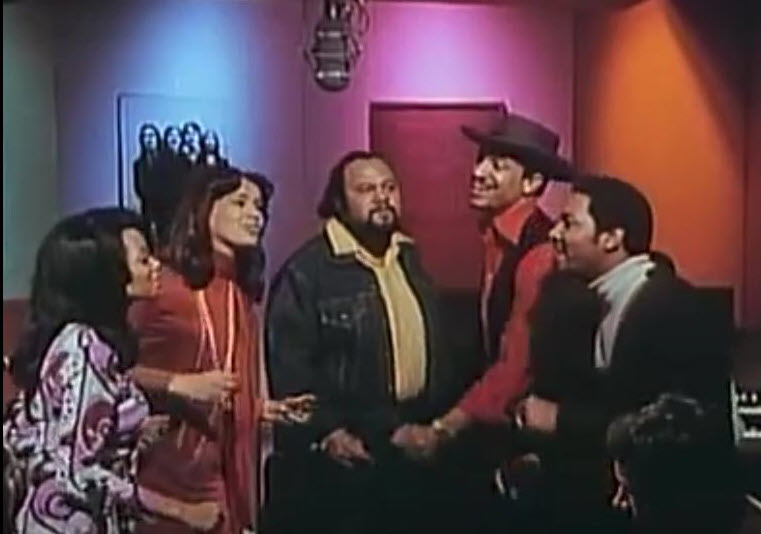
5th Dimension on Sing a Song of Murder
The 5th Dimension were the guest stars that week, and Marilyn McCoo sang that torch song like no one else could. I drove my mom crazy as I belted it out from the top of my lungs and begged her for 5th Dimension albums for my birthday. I still have my original 5th Dimension Live double album and the 5th Dimension Greatest Hits on Earth, both of which feature the song.
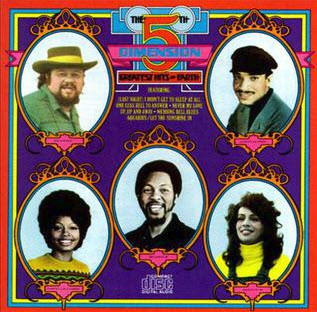
Harder than the Average Song
The other day I was falling down a rabbit hole on Instagram where I saw that Marilyn McCoo and her husband Bill David, Jr. had started an Instagram account (you can follow them here). I started following them, enjoying reading about how they are celebrating their 50th anniversary this year, and seeing old TV clips and new video of their performances.
I got to thinking about that To Catch a Thief episode and soon the rabbit hole led me to YouTube where I watched it. From there I found a tunnel to MusicNotes.com where I bought the sheet music for One Less Bell to Answer.
I sat down, excited to play it, and was stopped in my tracks. This Burt Bacharach and Hal David classic was as hard to play as any of Liszt’s classics!
Although I have continued to play piano all these years, I slogged and fumbled and scratched my way through to the end. My weakness in fingering skills and music theory was painfully apparent. I decided there and then that I wanted this one badly enough that I was willing to go back to the basics, learn what I didn’t know about music, and practice daily.
And so I found myself a good video series on music theory basics. I’ve been devoting a half an hour each day to learning the Circle of Fifths, scales and chords. I also put my husband through listening to me do another half an hour a day of practice, with an emphasis on One Less Bell to Answer. My husband says I’m getting better, though I’m still frustrated that it’s not yet quite where I want it to be.
Along the way though, something really interesting has happened.
I have noticed something wonderful after each painful, slow study and practice session. When I go back to my regular music (my sheet music stack includes the likes of Supertramp, Fleetwood Mac, Bach, Beethoven, Billy Joel, one of my favorite composers, Mr. Rogers), that music is much easier, and I’m much better at playing it! In fact, it’s more of a joy to play than ever, and I usually end up playing another hour in the evening, giving up time previously wasted on television.
So what does this have to do with family history and genealogy? Well…
Mastering the Music of the Genealogical Brick Wall
One Less Bell to Answer was not only my favorite song, but one of the toughest to master. So let me ask you, what’s your toughest genealogy case right now?
We all have a brick wall or two that has plagued us. I get emails every day from listeners of the Genealogy Gems Podcast outlining the family history challenge that has them stumped. Sometimes I think their hope is that I might have a genealogical silver bullet, or that I might be aware of some low-hanging genealogical fruit that they’ve over looked. I always encourage listeners to write in because many times there is a quick source or strategy that I can offer that they just may have missed. Or I can refer them to one of our articles, videos or podcast episodes that can provide a more in-depth answer. There’s always value in sharing with others the research challenges we face, and soliciting ideas and input.
However, in many cases, the answer is not so simple. Many of the cases described go well beyond a quick search at one of the Genealogy Giants websites. (You can learn more about them here.) These are cases that don’t have an easy answer. There isn’t one source just waiting to be found.
Sing a Song of Genealogy
Genealogical brick wall cases are much like the most glorious torch songs. They will require more education, steady relentless work, and a willingness to end each research session (like a piano practice session) unsatisfied with the current results. But when we stay focused and persist, we can remain optimistic that the end result will be worth it.
This answer to tough genealogical questions isn’t a popular one. That’s due in part to the increased tech tools and vast online databases (which are all fantastic boons for the genealogist by the way), that appear to offer instant gratification. This auto-generated “genealogy” can actually dilute our research edge when we really need it. We can be lulled into believing there should always be a quick fix. We find ourselves not as willing to stop, create a research plan, set up a tracking spreadsheet, and execute a plan to find the answer.
Many a family tree (particularly online) is filled with errors created by an unwillingness to take the time to dig deep. For example, are we really sure we have the right ancestor when there are several men by that name in that county at that time? Did we really prove it?
Genealogy Research Plans
Is creating and using a genealogy research plan new to you? That’s not usual.
These days, many people first come to climbing their family tree through a genealogy app. Several of the popular genealogy apps allow you to instantly start adding what you know already about your family to your family tree on the app. Then the app starts serving up record hints and matches – genealogical records it thinks may match the people you have added. It may also connect you to other users who share branches of your family tree.
While there’s a bit of instant gratification in all this, it doesn’t help us see the bigger picture, or develop our skills as a researcher. In a sense, we are following the app’s research plan (and I use that term very loosely here), rather than developing and conducting our own research plan.
When we finally take up the baton, and start leading our own research, we will gain more satisfaction and end up singing the right song.
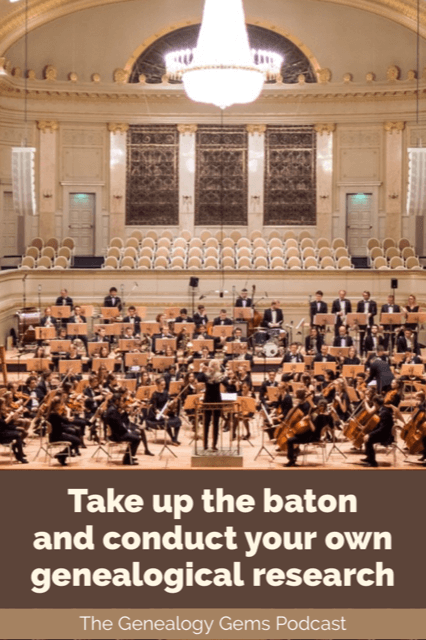
To learn more about genealogy research plans, read my article Which Way Do I Go Now? Organize a Genealogy Research Plan. Genealogy Gems Premium members can watch the Premium video Using Evernote to Create a Research Plan here. (Membership and log in required.)
Finding Genealogical Answers
If you’re facing an imposing genealogical brick wall, why not set aside all your other searches, and just work on this one? Slog along, fight your way through it! Do it for an hour every day. If your knowledge is lacking, go find the answers. Get up to speed on the areas you don’t know enough about.
It helps to accept that this genealogical answer that you seek, like a really wonderful song, is going to require more learning and practice than the average answer. But when it’s done, you’ll have the satisfaction of having conquered a really tough one, and the confidence that you got it right.
I can promise you this. When you take the time to craft and work a real and true genealogical research plan, you’ll be pleasantly surprised that when you go back to your other research, you will find it easier, and more enjoyable.
And yes, I’m still working on mastering my favorite song. Follow me on instagram and when I have it mastered, I’ll play it for you.
Please use the social buttons at the top of this post to share it with your genealogy friend.
 If you’ve got Irish roots and haven’t started exploring them, check out Irish Genealogy, recently re-launched by Ireland’s Department of Arts, Heritage and the Gaeltacht. Beginners rejoice: you can read the site in English and there are helpful links on the lower left to introduce you to Irish research and records and to explain how the site works. You can search indexes to church records, the 1901 and 1911 census, tithe records, soldiers’ wills, the Ireland-Australia database and more.
If you’ve got Irish roots and haven’t started exploring them, check out Irish Genealogy, recently re-launched by Ireland’s Department of Arts, Heritage and the Gaeltacht. Beginners rejoice: you can read the site in English and there are helpful links on the lower left to introduce you to Irish research and records and to explain how the site works. You can search indexes to church records, the 1901 and 1911 census, tithe records, soldiers’ wills, the Ireland-Australia database and more.



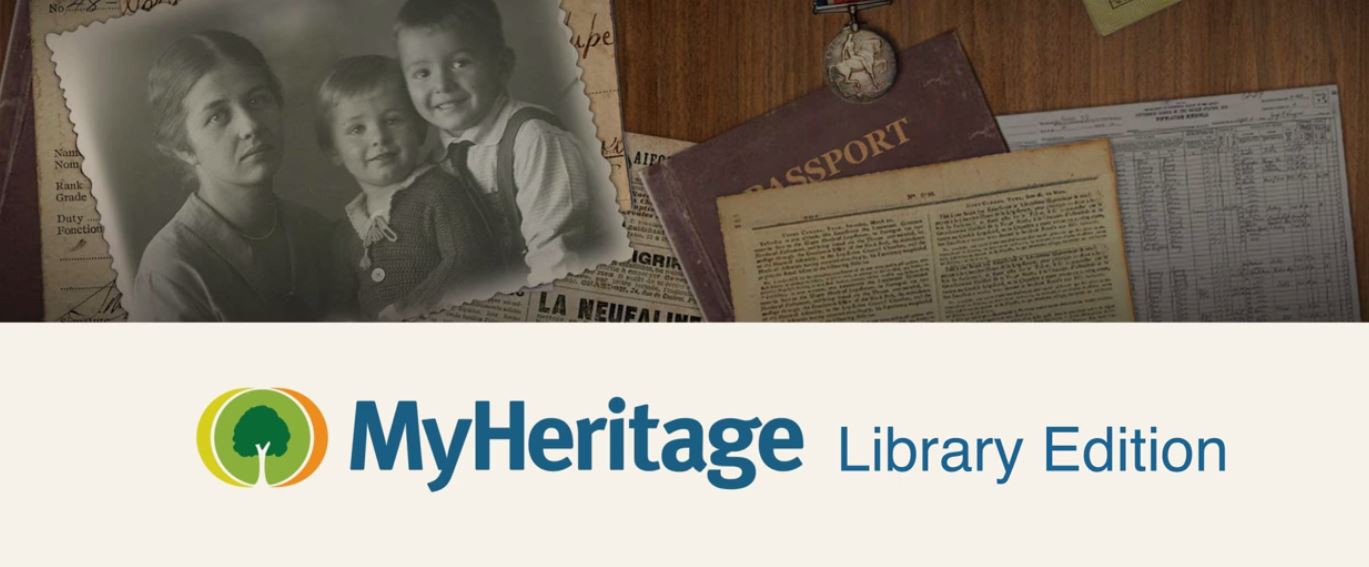 has launched the
has launched the 



 The population schedule includes the name, age, birthplace, and occupation of each household member as most censuses do.
The population schedule includes the name, age, birthplace, and occupation of each household member as most censuses do.



